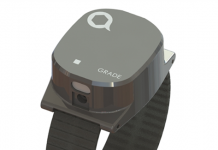Passive Systems:
These systems require periodic check-ins via telephone to verify an offender’s presence at the designated location (Crowe 2002). Identity verification may use passwords, wearable devices, or biometrics (e.g., fingerprints, retinal scans). Passive systems are primarily effective for enforcing curfew compliance.
Active Systems:
Active systems use wearable devices that continuously emit signals (Rondinelli 1998). A corresponding receiver in the offender’s home relays the signal to a monitoring station. Alerts are generated if the offender strays too far or tampers with the device.
Hybrid Systems:
Hybrid systems generally operate in passive mode until any of several predetermined triggering events occur (e.g., zone infractions, tamper indications, low power status), at which time they switch to an active reporting mode.
- Some versions allow officers to verify presence by driving past specific locations with mobile detectors (Mukherjee 1999).
- Active systems can also restrict movement by placing monitoring devices in prohibited zones.
- In cases where victims are issued receivers that detect the offender’s proximity, these systems help enforce exclusion orders.
GPS-Based Systems:
The GPS network consists of satellites, ground stations, and user devices (Aerospace Corporation, 1997). By measuring distances from at least three satellites, an offender’s location can be determined.
Applications of GPS include military operations, search and rescue, law enforcement surveillance, and private vehicle tracking (Aerospace Corporation 1997; Dotinga 2003). In criminal justice, GPS enables detention, restriction, and continuous monitoring without requiring in-home receivers, and is now widely used across U.S. jurisdictions (Jarred 2000).
More advanced concepts under testing include:
- Implantable micro-tracking devices, which can be placed under the skin to monitor location and physiological signals (The Economist, 2002). While removable through surgery, such technologies raise ethical, medical, and legal concerns.
- Cameras and biosensors integrated into wearable devices, capable of monitoring activities, alcohol levels, or other biometric data (Fabelo 2001; Bright 2002).
Modern Community-Based Electronic Monitoring
The integration of satellite positioning and mobile communication technologies has transformed community-based electronic monitoring by:
- Expanding applicability beyond house arrest to cover various offender categories.
- Allowing nationwide and continuous supervision without the need for in-home installations.
Two technological phases have shaped community-based EM:
The “Single-Unit” Phase
In the early stage, innovative startups disrupted traditional systems by developing single-unit devices that integrated an electronic bracelet, GPS, and mobile communication. These systems consisted of:
- Electronic bracelet with GPS, mobile communication, and tamper detection.
- Central monitoring system with GIS (Geographic Information System) integration.
The bracelet transmitted its location via GPS and cellular networks to the monitoring center, where GIS mapping determined compliance with restrictions.
While this design expanded coverage and flexibility, it faced practical issues: devices were bulky, required daily charging, and limited user mobility during charging. Offenders strongly resisted wearing such devices compared to earlier lightweight, maintenance-free RF bracelets.
The “Dual-Unit” Phase
Traditional EM providers later introduced a dual-unit model that combined mature RF-based systems with new GPS and mobile technologies. This model included:
- Electronic bracelet: tamper-detection transmitter worn on the ankle or wrist.
- Portable tracking unit: incorporating GPS, mobile communication, bracelet-signal receiver, and rechargeable battery. The offender carried this unit within a defined range of the bracelet.
- Central monitoring system: analyzing signals and reporting compliance.
This dual-unit approach balanced innovation with established reliability, avoiding many drawbacks of single-unit systems while modernizing EM technology.















